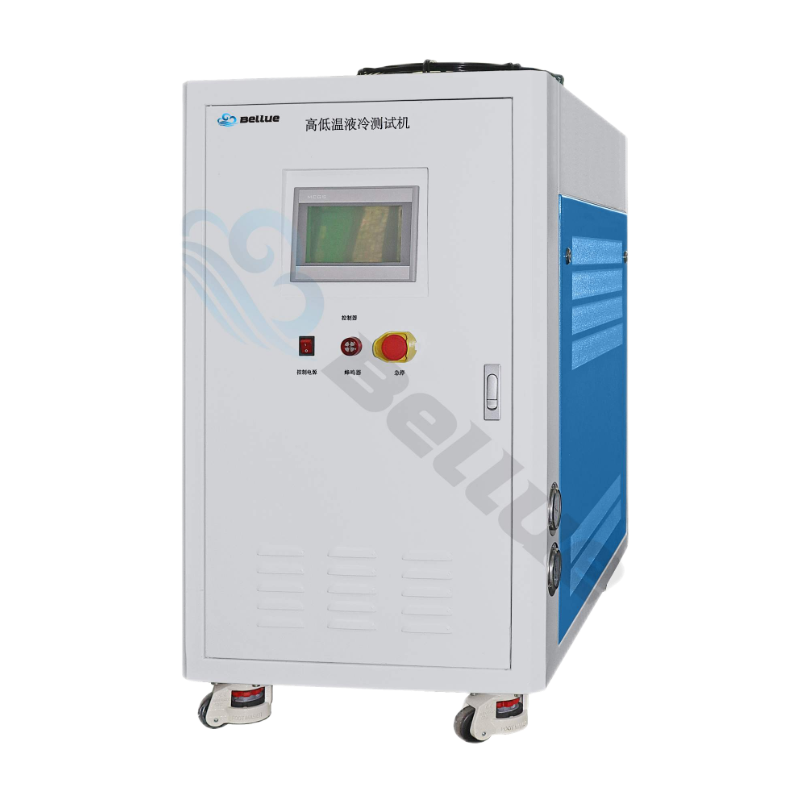New energy vehicle battery liquid cooling test equipment to solve the problem of power battery stability
New energy vehicle battery liquid cooling test equipment is widely used in the new energy vehicle industry, can be used for battery pack temperature control test, battery pack liquid cooling test, low temperature test, etc. How much do you know about the application and related knowledge of new energy vehicle battery liquid cooling test equipment?
First, the application of new energy battery pack liquid cooling test machine
The new energy vehicle industry has developed rapidly, but as the problems of the power battery system have gradually emerged: uneven quality, low technical level, and poor stability. Therefore, for new energy vehicle companies and power battery manufacturers, conducting power battery stability testing is a necessary procedure to reduce the risk of thermal runaway and avoid accidents.
In the field of power batteries, the high energy density and stability of batteries have always been contradictory. The pursuit of high mileage is bound to reduce the thickness of the diaphragm and increase the number of cells, but the cell overheating is the key problem that leads to the thermal runaway of the power battery. Through the forced cell thermal runaway test, combined with the power battery heat insulation and flame retardant system, even if the temperature next to the cell reaches 80 degrees, it can not cause a chain reaction of the adjacent cell, which proves the stability of the power battery.
The test of the power battery is far from limited to this, but also includes vibration test, mechanical shock, drop, flip, simulated collision, extrusion, temperature shock, wet heat cycle, seawater immersion, external fire, salt spray, high altitude, over-temperature protection, short circuit protection, over-charge protection, over-discharge protection and a series of strict acceptance items to ensure that the power battery is qualified off the line.

Second, the liquid cooling test machine of Yunhai new energy battery pack
In response to the needs of the new energy automobile industry, Yunhai Junlan company has developed and designed a test equipment suitable for the new energy power battery pack test coolant. These devices can also be used for electric drives of new energy vehicles, motor testing, and temperature control systems for battery pack testing. The equipment includes compressor cooling assembly, refrigerated water tank, cooling tower, valve pump assembly, sensor, electronic control system and auxiliary equipment.
The new energy battery pack liquid cooling test system uses a mixture of water and ethylene glycol as the cooling medium, which can reach a temperature of -45 ° C (lower temperatures can also be customized), and the temperature control accuracy is 0.5 ° C. The system uses a well-known brand PLC/PC controller as the temperature controller, and can communicate with the whole system and linkage with the host computer, can achieve remote control and automatic temperature control. The user can set the temperature, pressure and flow value, and realize the data output.
Yunhai Junlan New energy power battery pack liquid cooling test machine provides pressure control and low temperature test environment for new energy vehicle battery pack, which can meet the needs of battery pack test under low temperature conditions, and ensure that the battery pack can meet the technical requirements of flow, control and pressure in a low temperature environment.
Energy storage liquid cooling temperature control technology application advantages
How to derive the test results of high and low temperature coolant tester
High and low temperature coolant test electrical source circuit connection method
The problem of water source during the use of high and low temperature coolant testing machine
Coolant filling and discharging method of battery module high and low temperature liquid cooling test machine
High and low temperature liquid cooling test machine solutions
